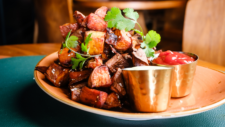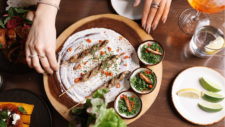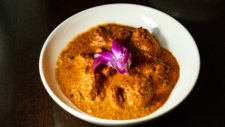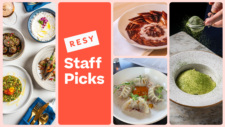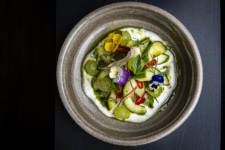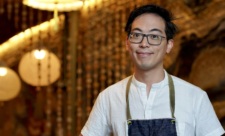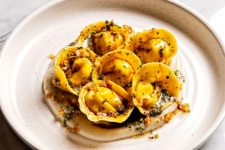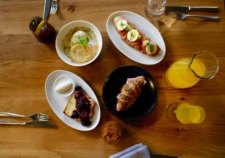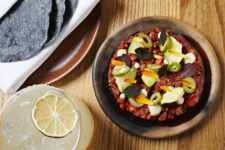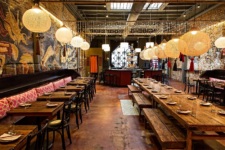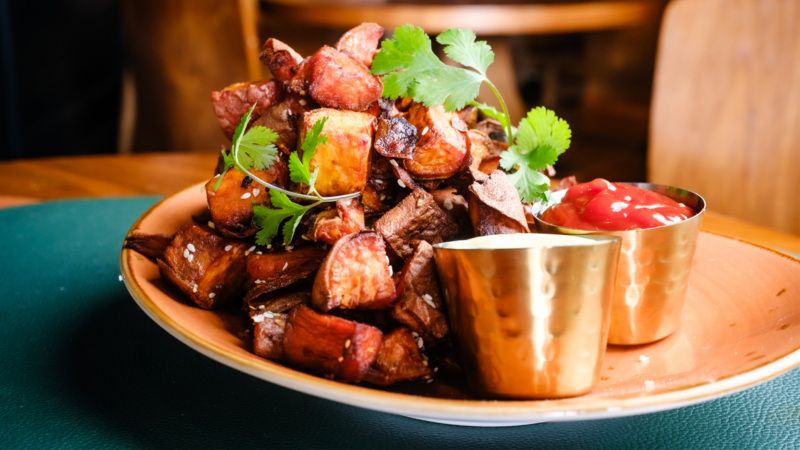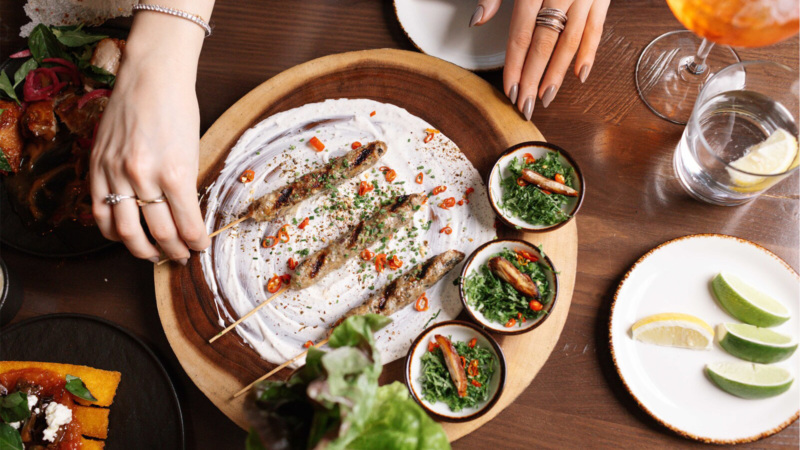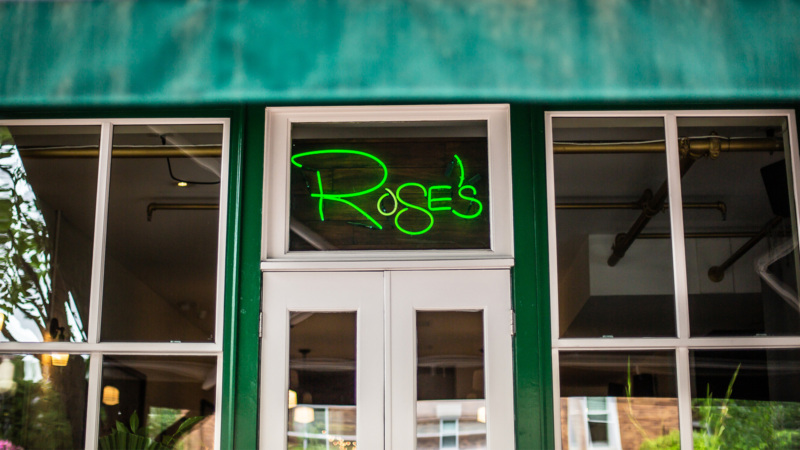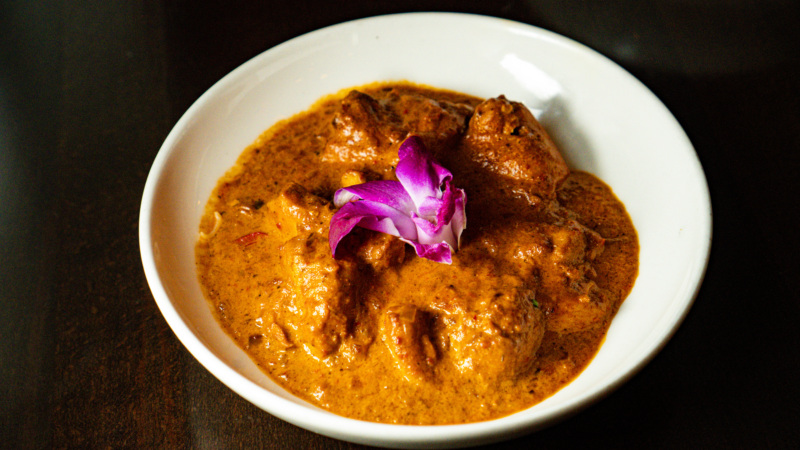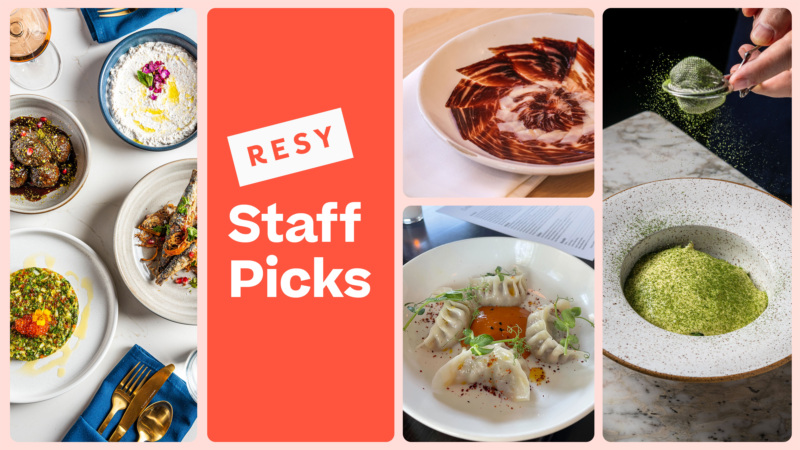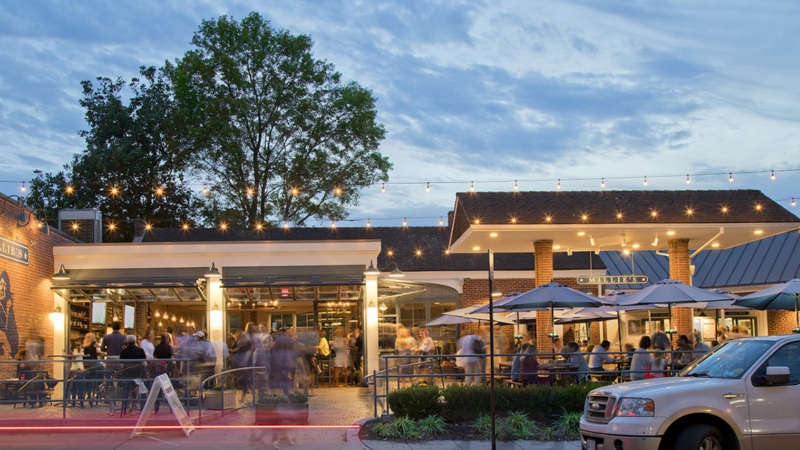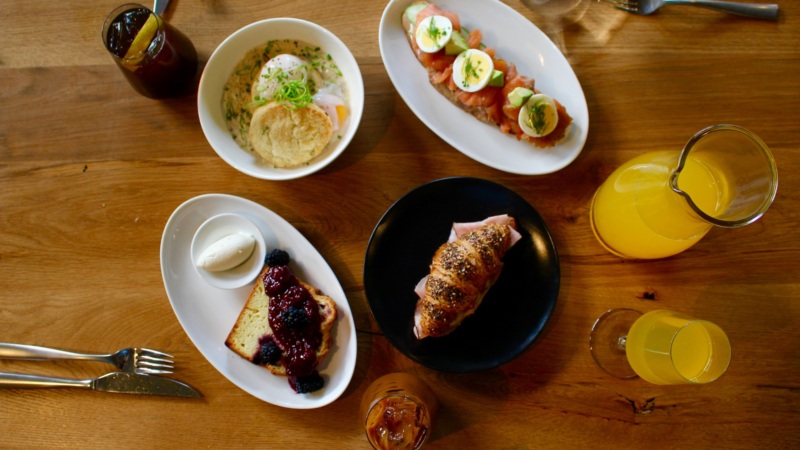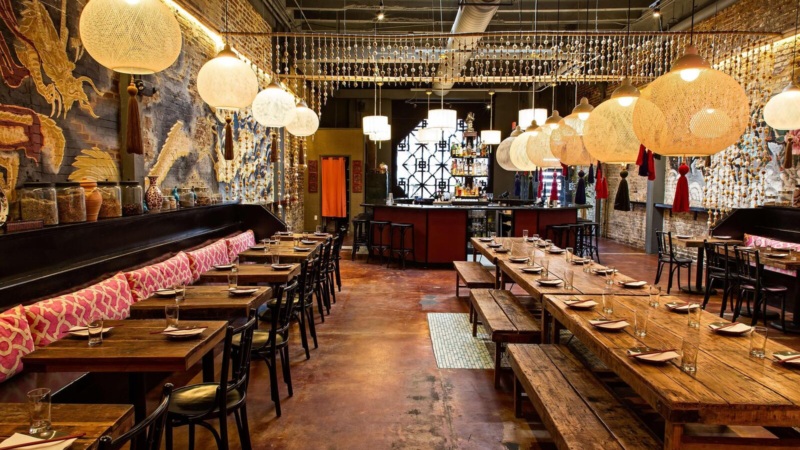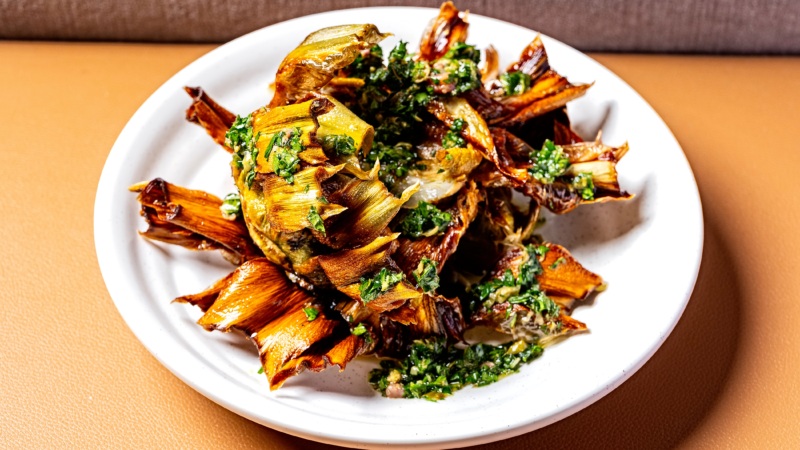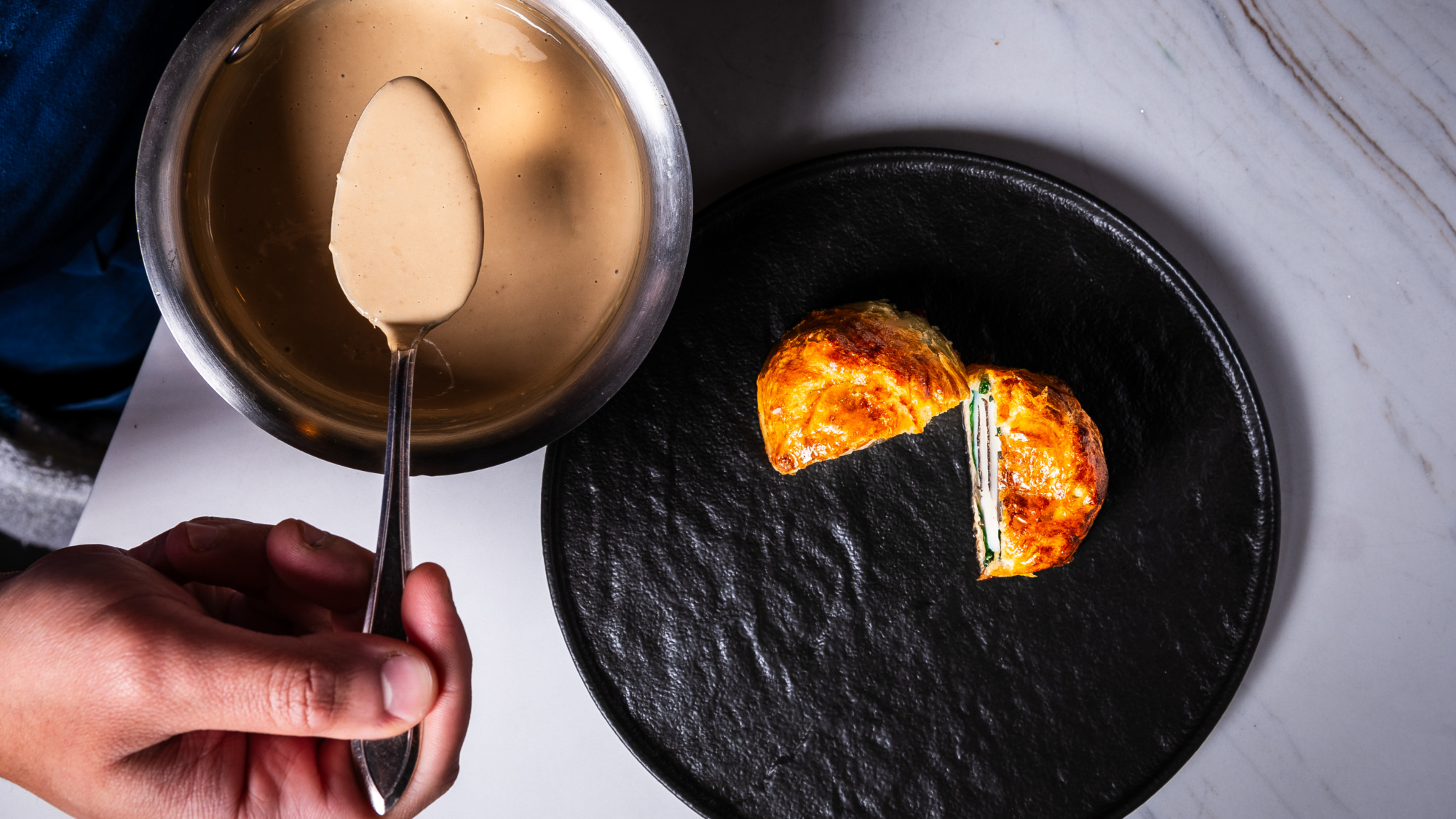
How Hiraya Makes Its Modern Filipino Magic, In Eight Dishes
At his restaurant Hiraya, chef Paolo Dungca wants you to feel right at home. Against a canopy of plants, colorful mosaics, and gentle hum of Filipino pop hits, a meal at this welcoming Filipino café (and so much more) nestled on H Street is as if you’re dining with old friends. “When you come in, you see a big table leading to the kitchen,” Dungca says. “I wanted it to look like my mom’s house, but better.”
Just like any old friend’s home, you’ll find yourself returning to Hiraya for multiple meals. Whether for breakfast, lunch, dinner, or an afternoon snack, no meal at Hiraya will be quite the same. On the first floor there’s Hiraya Café, open from 8 a.m. till close from Tuesday to Sunday; it showcases homestyle Filipino dishes, housemade pastries by pastry chef Pichet Ong — whose renown working for Jean-Georges Vongerichten earned him five James Beard nominations — and brilliantly flavorful lattes from Filipino coffee supplier Sun & Stars. When dinner service begins at 5 p.m., the restaurant’s second floor opens its doors. Here, you’ll be swept up into Hiraya’s imaginative and rotating seven-course tasting menu (with an optional wine pairing) in a dining room retrofitted with an open kitchen, so you can watch the chefs work. If that wasn’t enough, the second floor houses a cozy bar, the perfect place to snag a memorable cocktail, a glass of wine, or a quick bar bite.
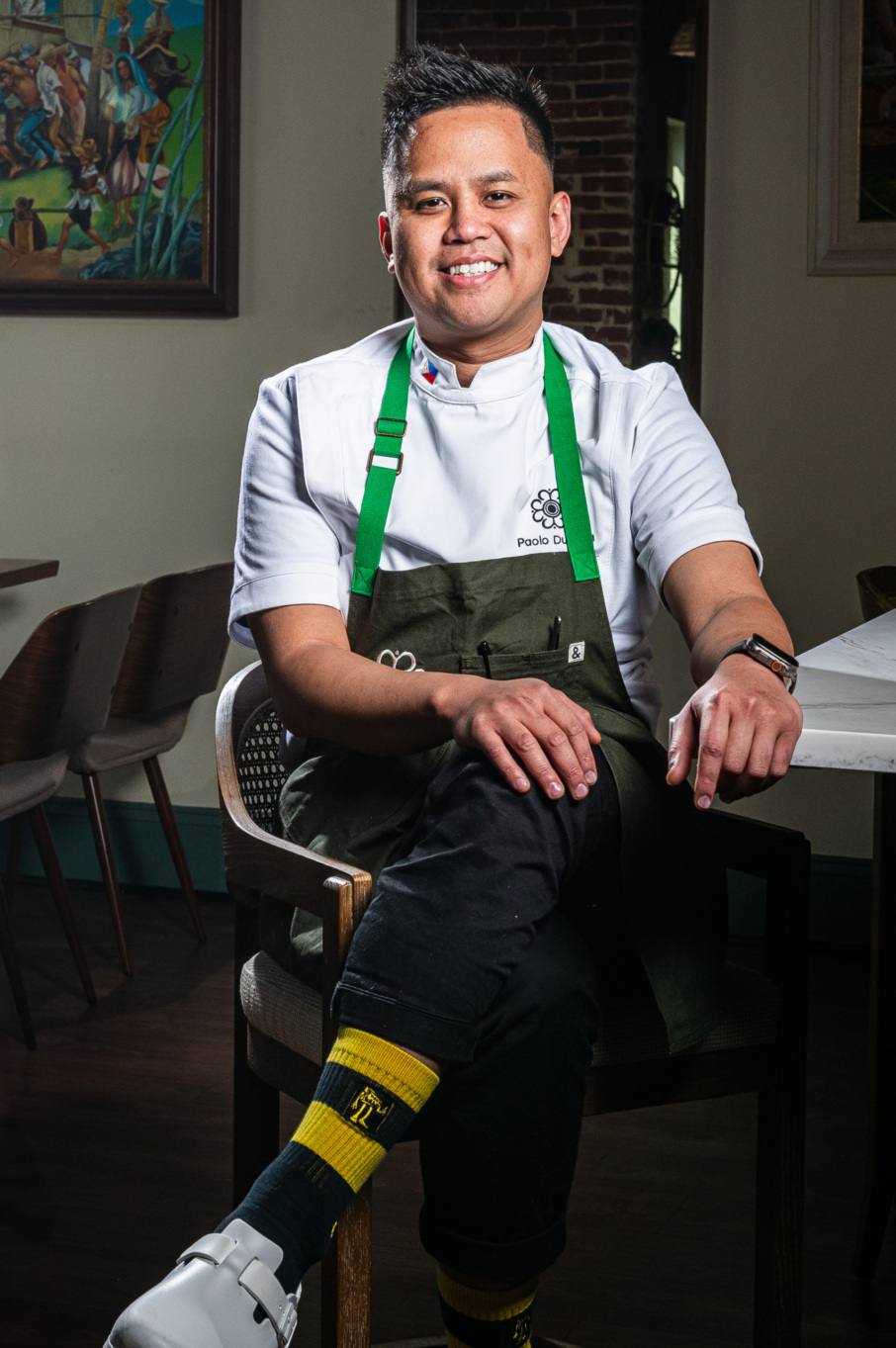
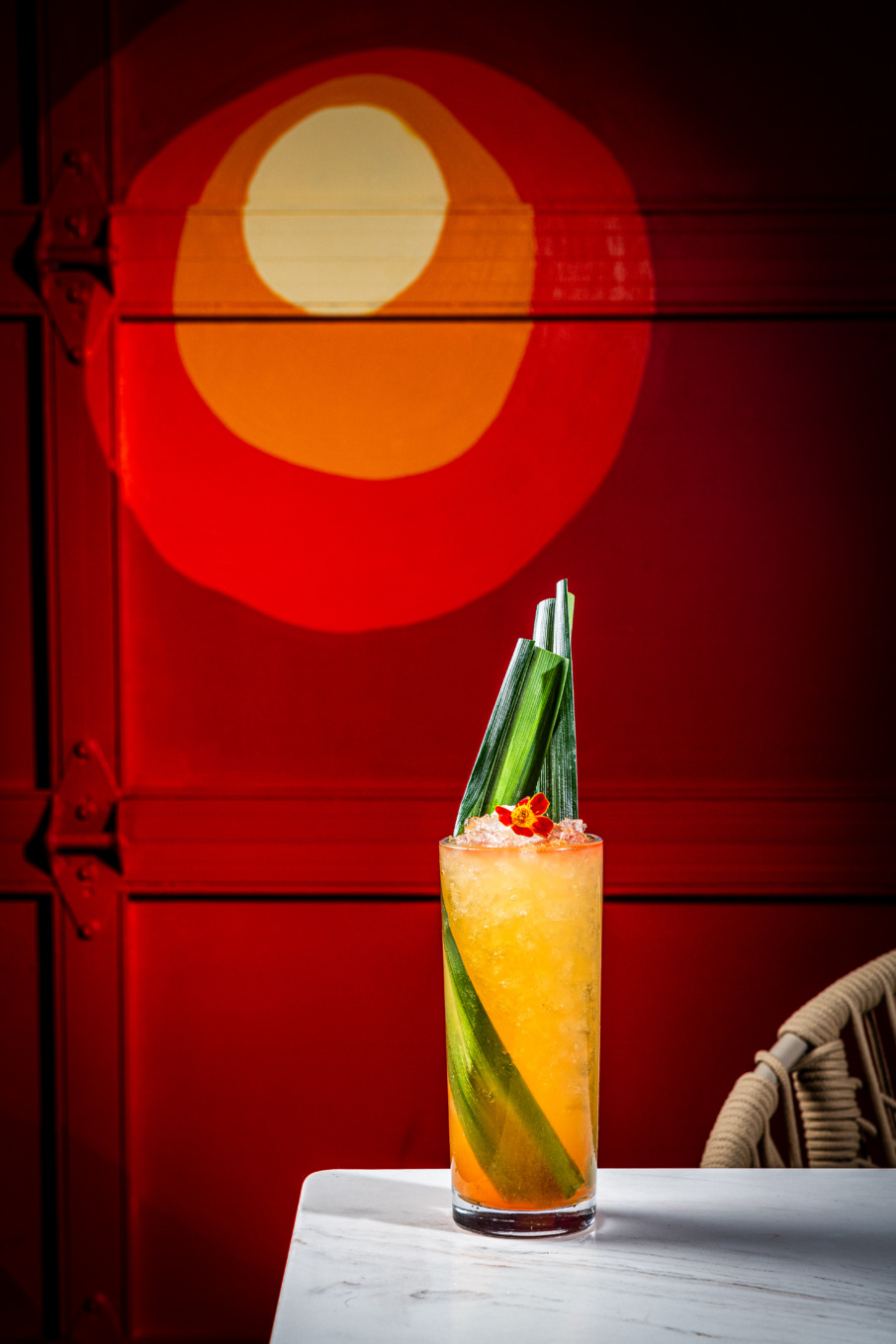
At the helm of this ambitious concept is Dungca, who has partnered here with Jeremy and Juan Canlas of Supreme Barbeque. Dungca himself has a reputation for inventive Filipino cooking across D.C., notably at Kaliwa, Restaurant Eve, and most recently Pogiboy, a fast-casual joint that closed in 2023. While running Pogiboy in downtown’s The Block food hall, Dungca began teasing out what would become the first iteration of Hiraya, as a much anticipated fine-dining pop-up. Now, he’s turned that into a full restaurant, with help from a team of chefs and servers, many of whom are Filipino as well, who he recruited to help build his distinctive notion in permanent form.
Dungca’s roots are in San Fernando, the Philippines’ culinary capital, and Manila, but he moved to Los Angeles with his mother at 13. Although he began his cooking career on the West Coast, a trip to Washington convinced him to move east. And Hiraya would become his dream project, an opportunity to champion the food he craves most in a form that may seem recognizable — but not too much so.
“I wanted to challenge people’s perception of what Filipino food can be,” Dungca says. “It might not look like something that you’re familiar with. But then if you eat it, you’ll understand: ‘OK, that’s a point of reference that I’m used to.’”
Here, Dungca takes us through eight essential dishes at Hiraya, in his own words.
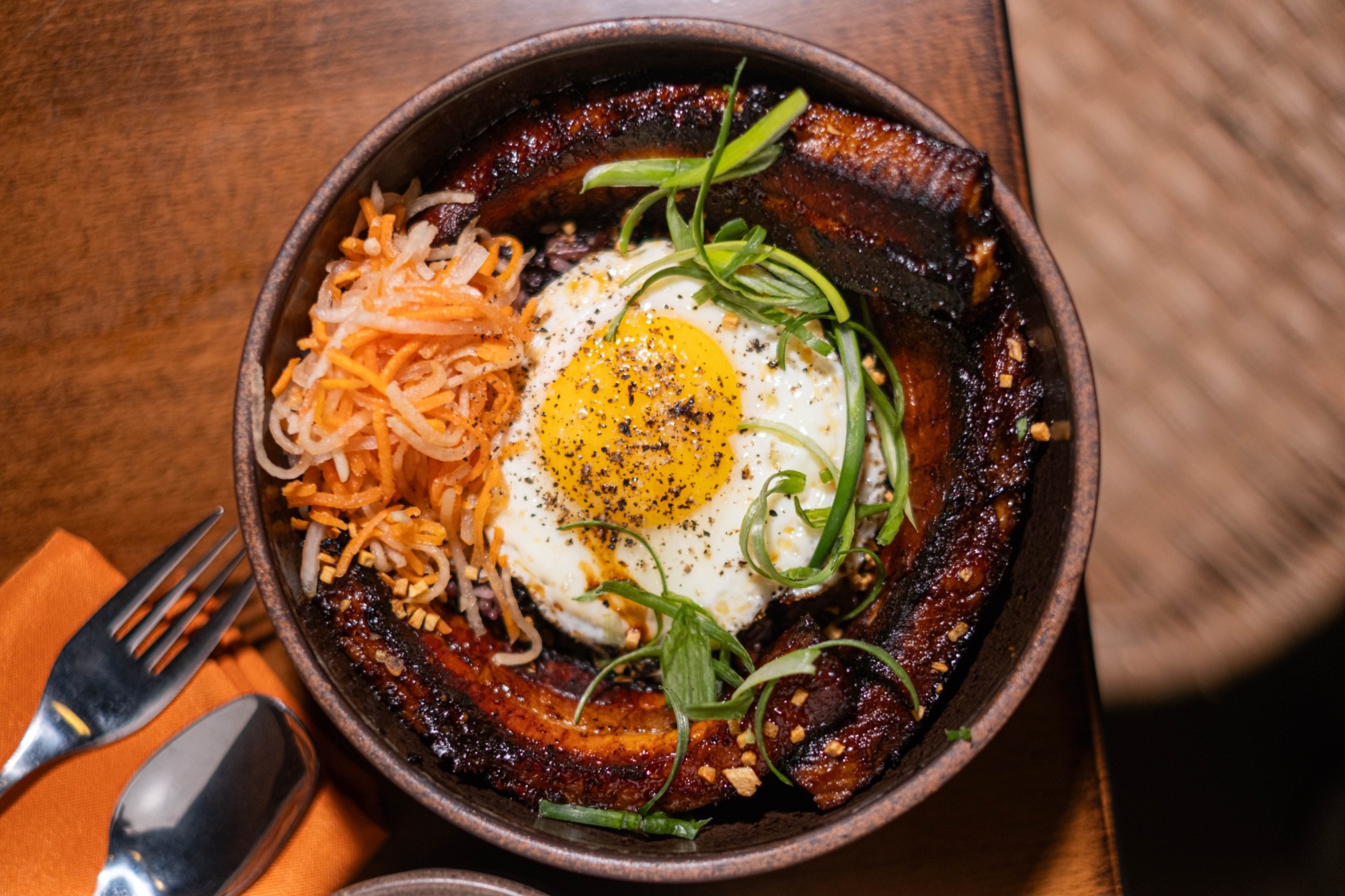
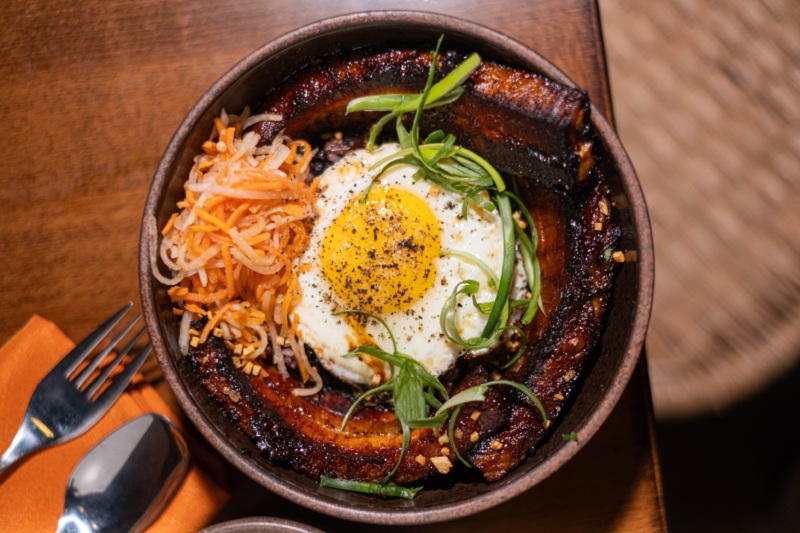
BREAKFAST & LUNCH
Filipino Breakfast
“Silog is a Filipino breakfast staple. That translates to ‘sinangag,’ which is garlic rice, and ‘log’ (egg). Basically, when you see tocino or sweet pork it would be spelled in the Phillipines as tosilog. Tapsilog is like beef, marinated beef. And longganisa, the sweet sausage, would be longsilog. I think a Filipino breakfast just needs to have the garlic rice and the egg. It can be a hotdog and an egg, and called hot silog.
“Growing up, when we would wake up, we would have garlic rice — either scrambled eggs or fried eggs — and sweet pork sausage. We just changed how the meat is treated. Usually, it’s slices of pork that are really tough. For the restaurant, we want it to be something that people are familiar with. We do pork belly for the pork instead of random cuts of pork shoulder. For the tapa, we use L.A.-cut galbi, marinated Filipino style. It’s basically a bunch of garlic, soy sauce, and then Sprite or 7 Up. They say [the soda] tenderizes. It also helps with the caramelization when you cook it.
“We make our own sausage. It’s a family recipe from one of my partners, Jeremy’s dad; it’s his grandma’s recipe. The idea was to bring that nostalgia, for D.C. to experience what it’s like growing up in a Filipino household.”

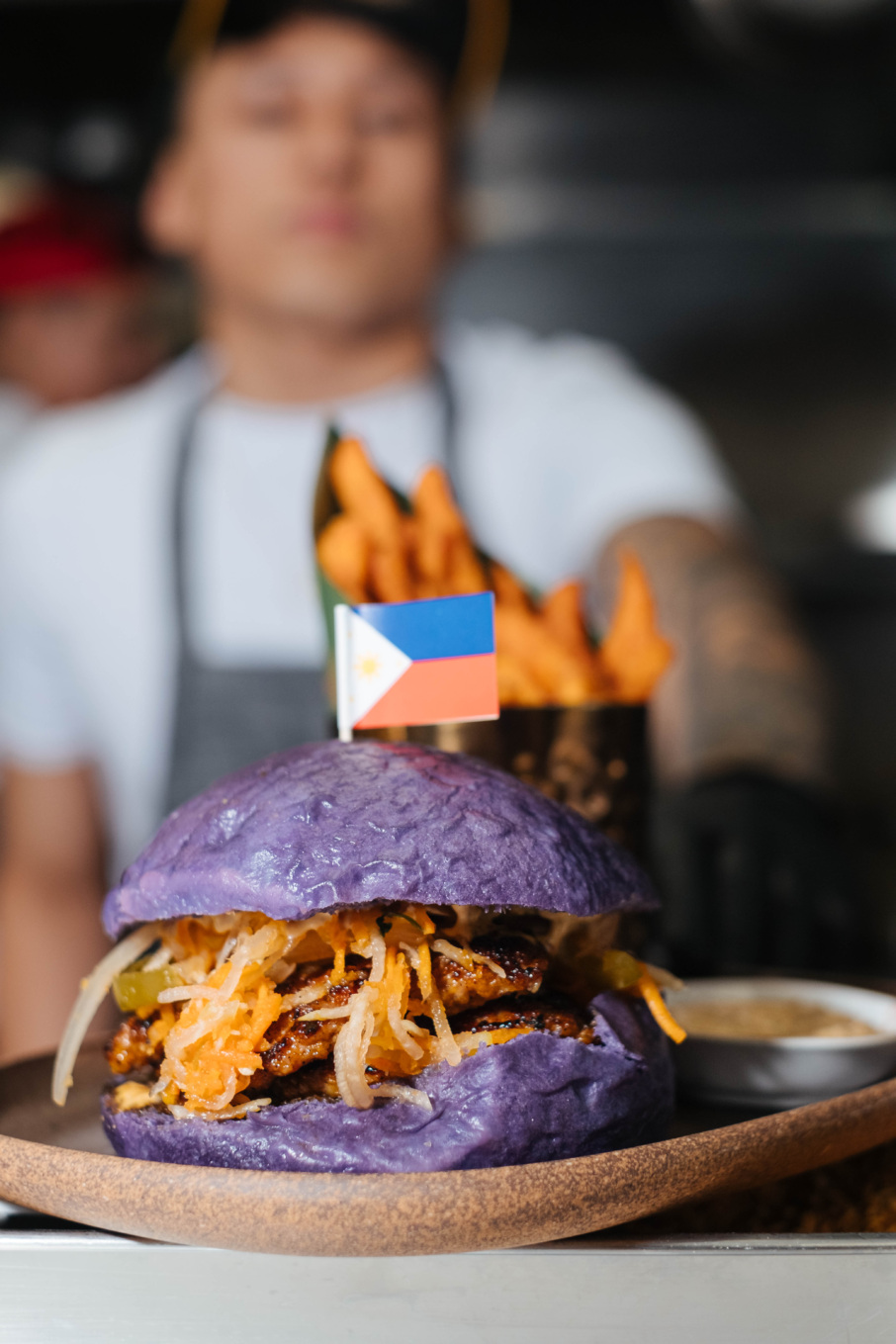
Chori Burger
“We just had to bring this back. For me, this burger was a pivotal moment in my life, and it was nice to see Filipino cuisine highlighted in a prestigious magazine. [Pogiboy’s Tocino Burger was on the cover of Food & Wine Magazine in June 2022.] Being on the cover is pretty huge. It’s kind of like, look, Ma, we made it.
“The purple bun came just for fun. Why not try making a bao bun that’s purple. No one else was doing it. And then for the sausage patty, it is basically a combination of the tocino and the longganisa; we pretty much just grind it. So it’s basically a sweet, garlicky, vinegary patty, like a Filipino breakfast sandwich or burger.
“While we were playing around with it, we would make the buns and then we would bake them, but they would turn brown. It’d be brown [on the outside] but then when you cut into it, it’s purple. We tried steaming it. And we were like, oh shoot, it works. So we started steaming the buns.
“At that time, we didn’t have a nice steamer so some of them would be flat. Some of them would be wrinkly. We just had to dial it down. It came to a point where like, okay, this is the recipe, this is the temperature. This is the amount of time it needs to cook and then it’s cool.”
Specialty Lattes
“Our lattes are inspired by some of the flavors we grew up with. My favorite one is the champurrado. It’s basically a chocolate rice porridge; they usually put dried salty fish on it.
“So it’s all just traditional Filipino-inspired flavors. Like, turon is usually a dessert wrapped in an egg roll but with banana and caramel. We wanted to recreate something that we’re familiar with and present it in a way that people in America would understand.
“Makulay basically means ‘colorful.’ You know when you get a birthday cake, it’s usually a white cake with sprinkles? We wanted to take those flavors of the yellow cake and brown butter, and put it into a syrup to make coffee. It’s not Filipino. But growing up, birthdays are huge in the Philippines. So you would always have some kind of colorful cake.”
Guava Cheese Danish
“Pichet Ong and I have been very great friends since our time working together at Foreign National. I consider chef Pichet a mentor and a great advisor in everything we do at Hiraya. He has developed all of the breakfast pastries for our café and he has also done the desserts for our restaurant as well. My favorite creation he’s done at Hiraya would be the guava cheese danish. Guava is a fruit that we grew up eating in the Philippines and we thought it would be a unique thing to do as a croissant for the café”
About Hiraya’s Tasting Menu
“When we created the tasting menu, we wanted to highlight each chef’s experiences. Jaerron [Felipe] used to work at Love, Makoto, so he wanted to do something with raw fish, and we created that in tart form. It’s also a combination of dishes that we love eating.
“The starters are traditional Filipino desserts, but we turned them savory. I’m always tired of eating sweets all the time, so we felt like we could do it in a way that’s savory but looks like dessert. For the other dishes, we all just listed our favorite dishes growing up and then incorporated that into the menu. There’s also a big synergy between natural wines and these flavors.”
—Paolo Dungca, Chef and Owner
“All the wines that I select are natural wines — minimal intervention, at least organic if not also biodynamic farming.
“The type of wine pairing depends on the course. How strong is the adobo or what is going with the adobo? Orange wines are my favorite; that means white grapes fermented the way you would make red wines so the wine takes on the pigment. You also get tannins, saltiness, apricot, all these cool things.
“I find that these wines go so well with some of the really pronounced flavors of the tasting menu.”
—Chris Walker, General Manager
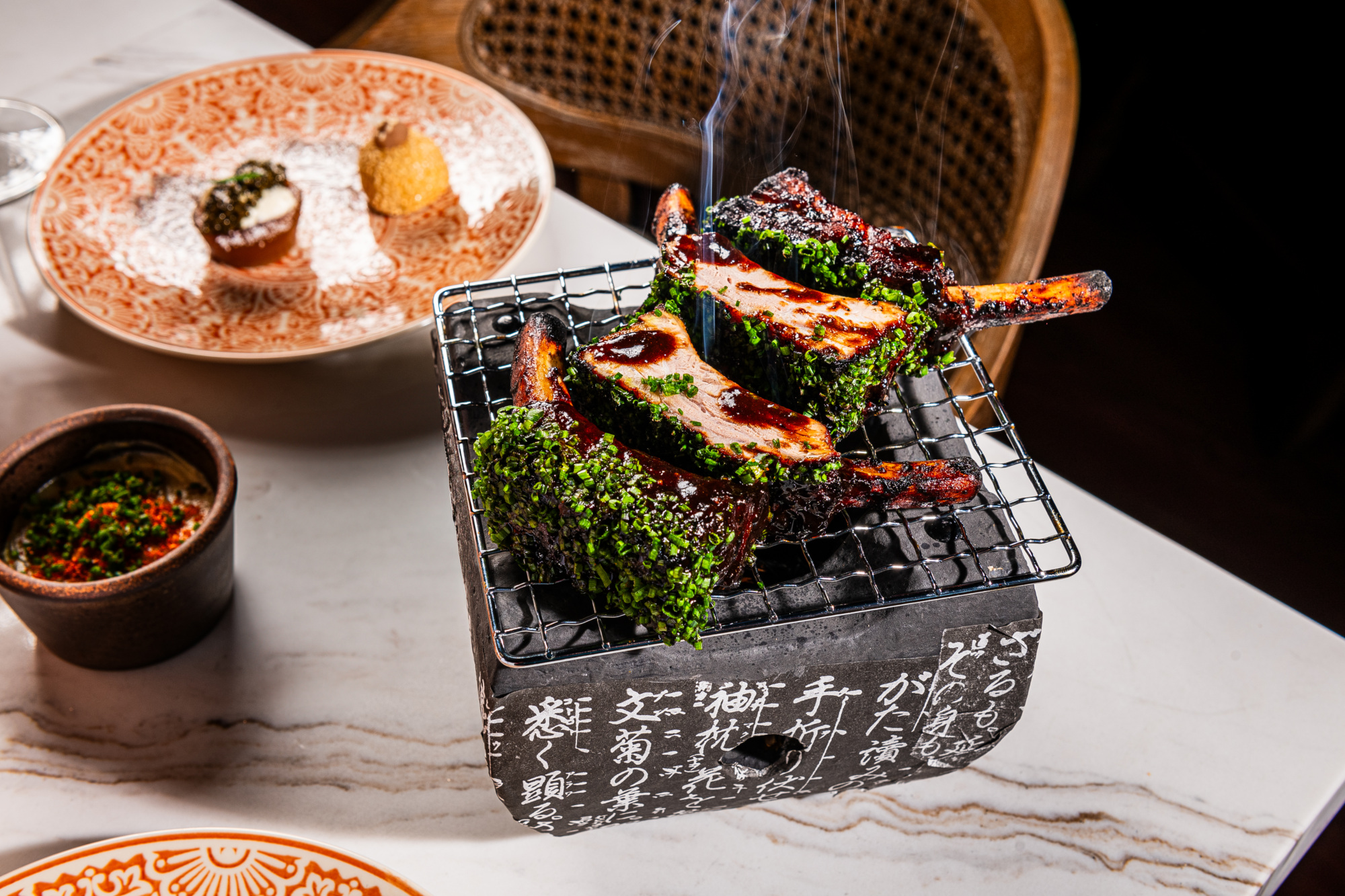

DINNER
Porkchop “Dinuguan”
“The story about ‘chocolate meat’ is: Dinuguan is a pork-blood stew with long peppers, onions, and vinegar, and it’s black. Growing up, we would have a bunch of leftovers for that dish. And we would put them in an ice cream container and freeze them. So when our friends would come over, they would say, ‘Oh yeah, chocolate ice cream!’ But it’s actually pork blood stew. And that’s why we call it ‘chocolate meat.’ We made the sauce without pork blood. It still looks like blood, but there’s no blood in it. We substitute the blood with burnt coconut to make it black, and it still has the same flavors.
“I wanted to make something a little bit more refined, but not stray away from what [dinuguan] actually tastes like. For the protein, usually it’d be like pork shoulder that’s nice and braised, and then you cook the bejesus out of it till it’s tender. But this one, we just do a pork chop. I think it’s nicer.”
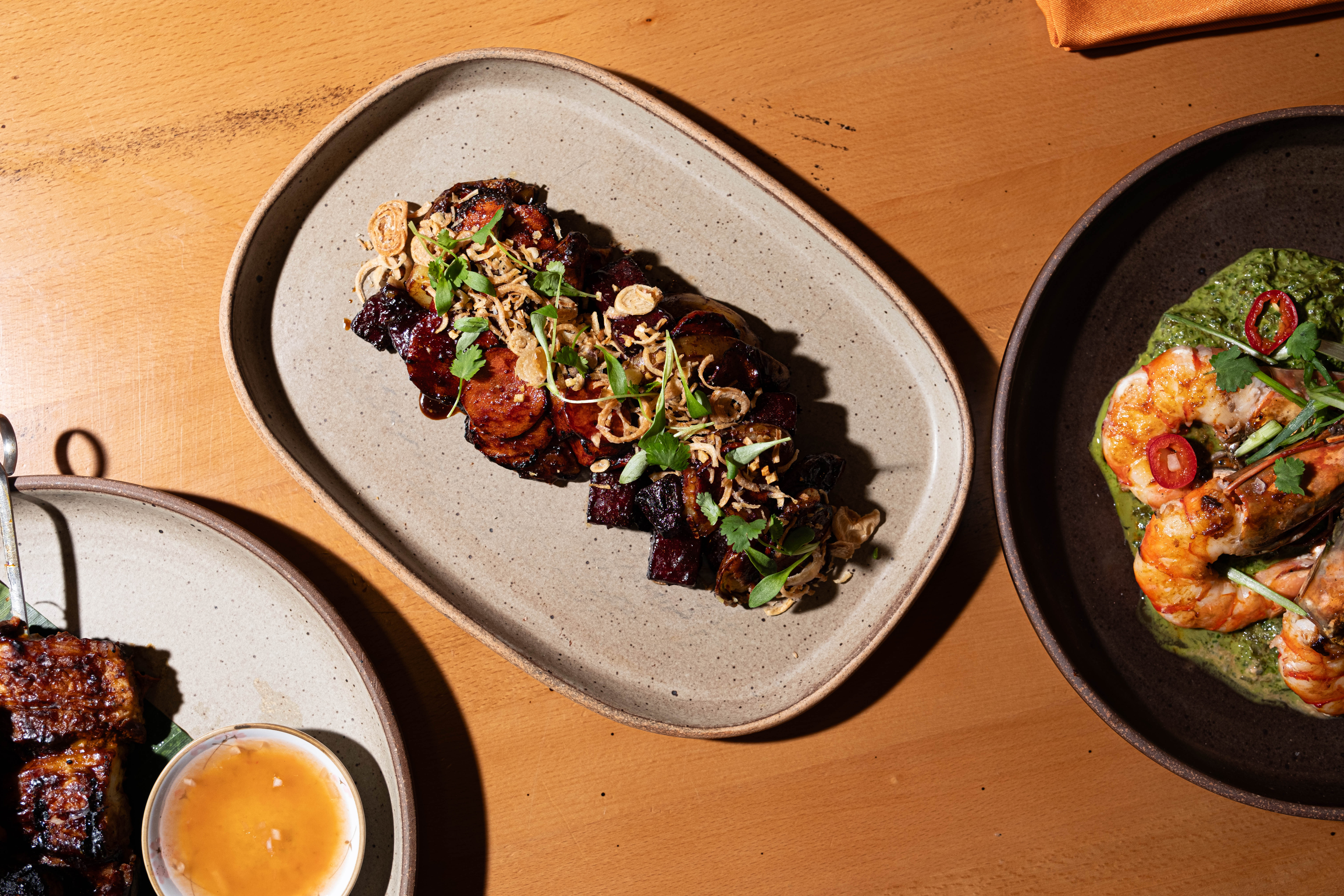
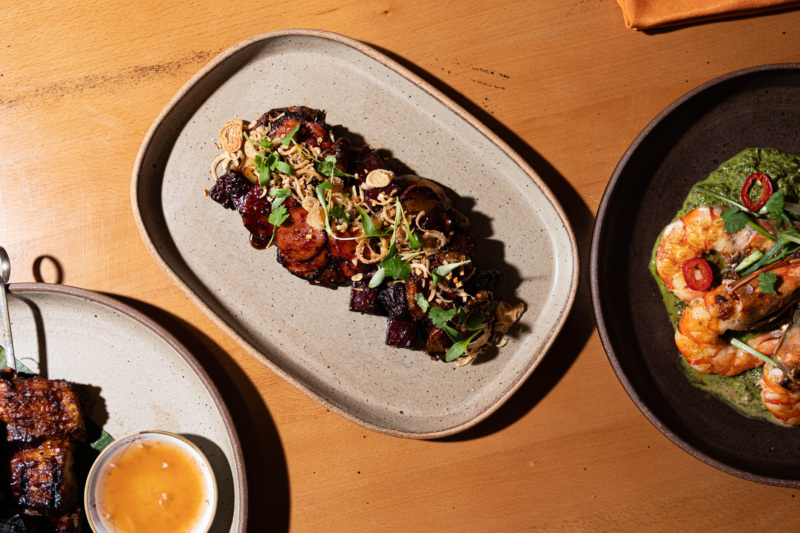
Beet Adobo
“I wanted to stay away from people just saying Filipino food is always meat heavy. There’s possibilities for Filipino vegan or vegetarian food, but it’s just like, who’s willing to explore? And for me, I’m willing to explore that.
“We wanted to add something vegan-friendly. We made a beet adobo (the adobo sauce — garlic, vinegar, soy sauce — is already vegan). Beets have always been good to me. They have a sweet flavor, so I thought they would be a great combination of earthy, sweet, and sour. We wanted to cater to a healthier option, and to the new wave of dining, using vegetables as the main highlight as opposed to meat always being the star of the show.”
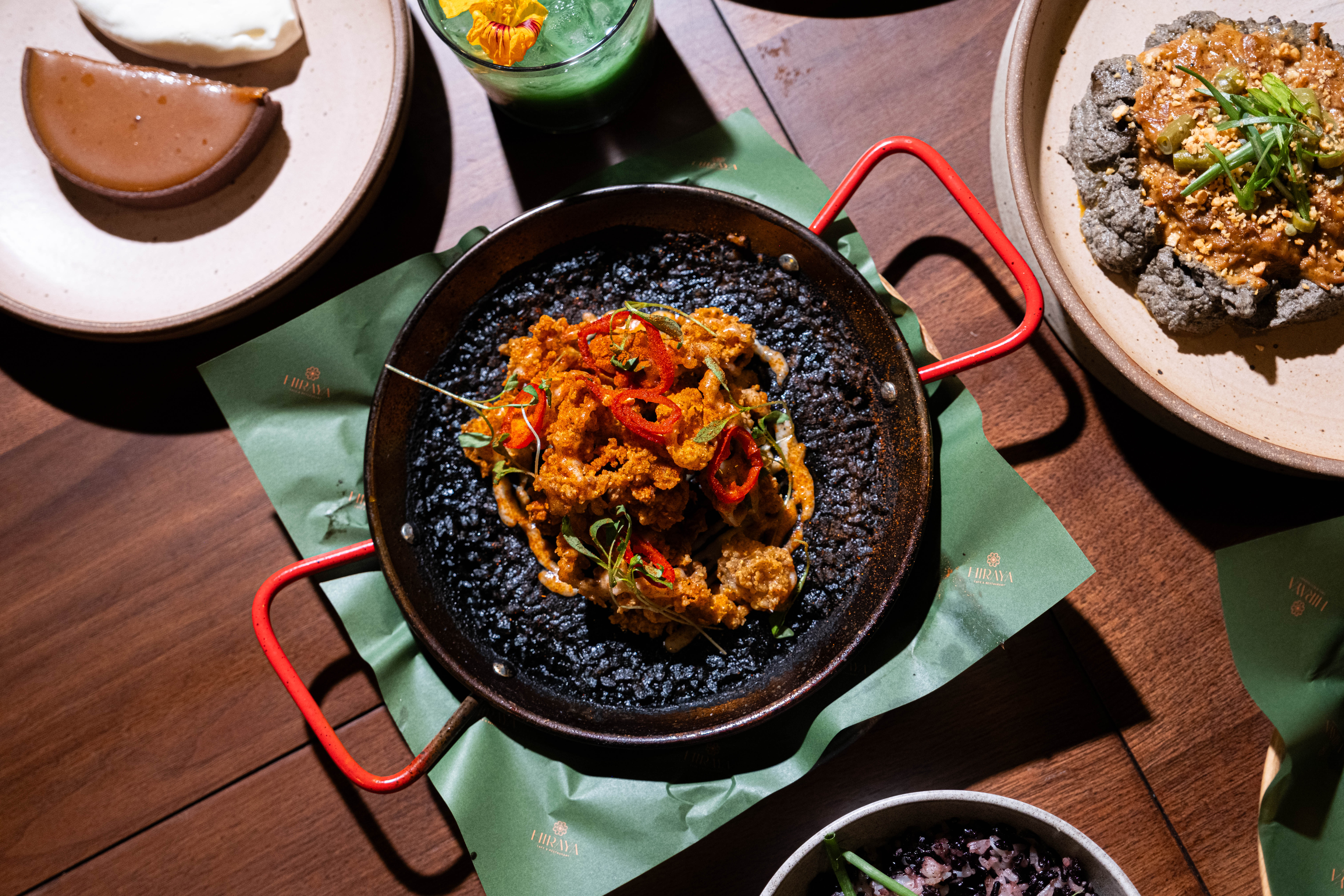

Adobong Pusit Paella
“Growing up, my mom’s aunt made this adobo, which is a squid adobo with squid ink. I would always eat it, and I’ve always been a fan of it. And then when she would visit us in L.A., she would bring that frozen, and we would eat it for dinner when she left, like months later.
“I’ve always been a fan of paella at other restaurants. And we were colonized by Spain. So for me, it was nice to fuse that together where it’s the Spanish influence but with Filipino flavor. Then we garnish it with the aioli, like when you go to a Spanish restaurant and they have a paella negra. And we wanted to do squid because that’s something that was familiar to me growing up.”
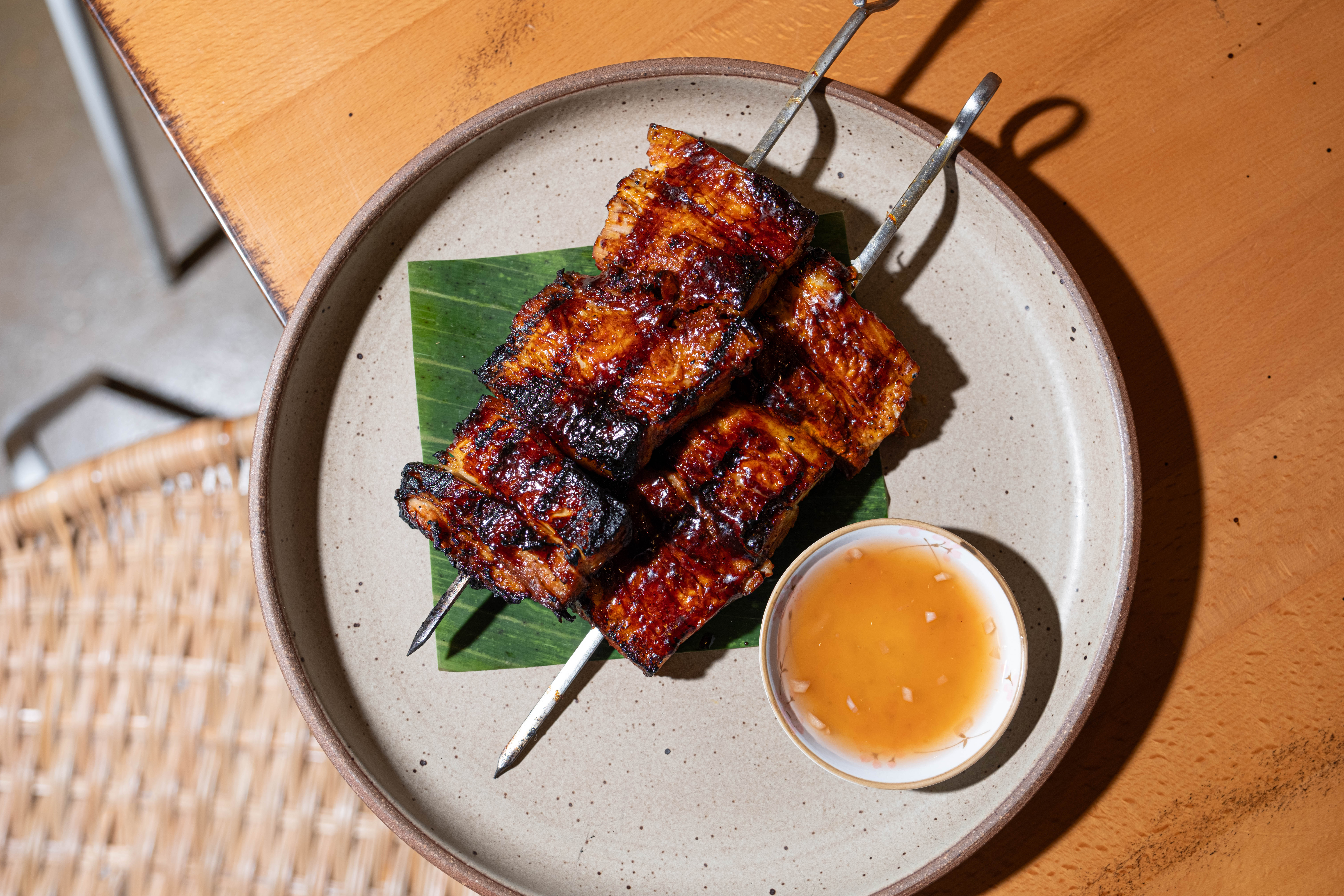

Filipino Street BBQ
“Barbecue is big in the Philippines. You walk down the street, there’s people grilling. It’s one of those street foods that is very familiar. So we just put pork belly on a stick, grill it, and it tastes like home. It’s very traditional.
“For the banana ketchup, we source it from a Filipino market but we mix it with a bunch of dark soy calamansi, and use the banana ketchup as a base for a glaze. The sawsawan is a dipping sauce, usually with spiced vinegar, like a mignonette for an oyster.”
Jess Eng is a food and culture writer. She contributes to the Washington Post, The New York Times, TASTE, Eater, and more. She also founded and hosts the fermentation-focused podcast Ferments.Live. Follow her on Instagram. Follow Resy, too.


